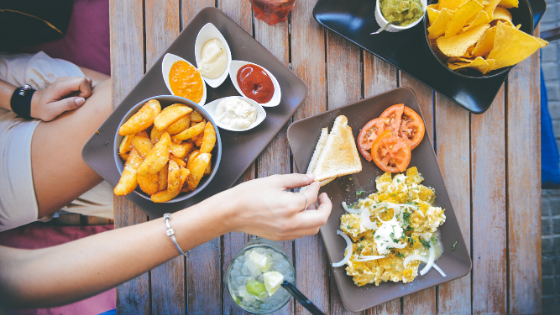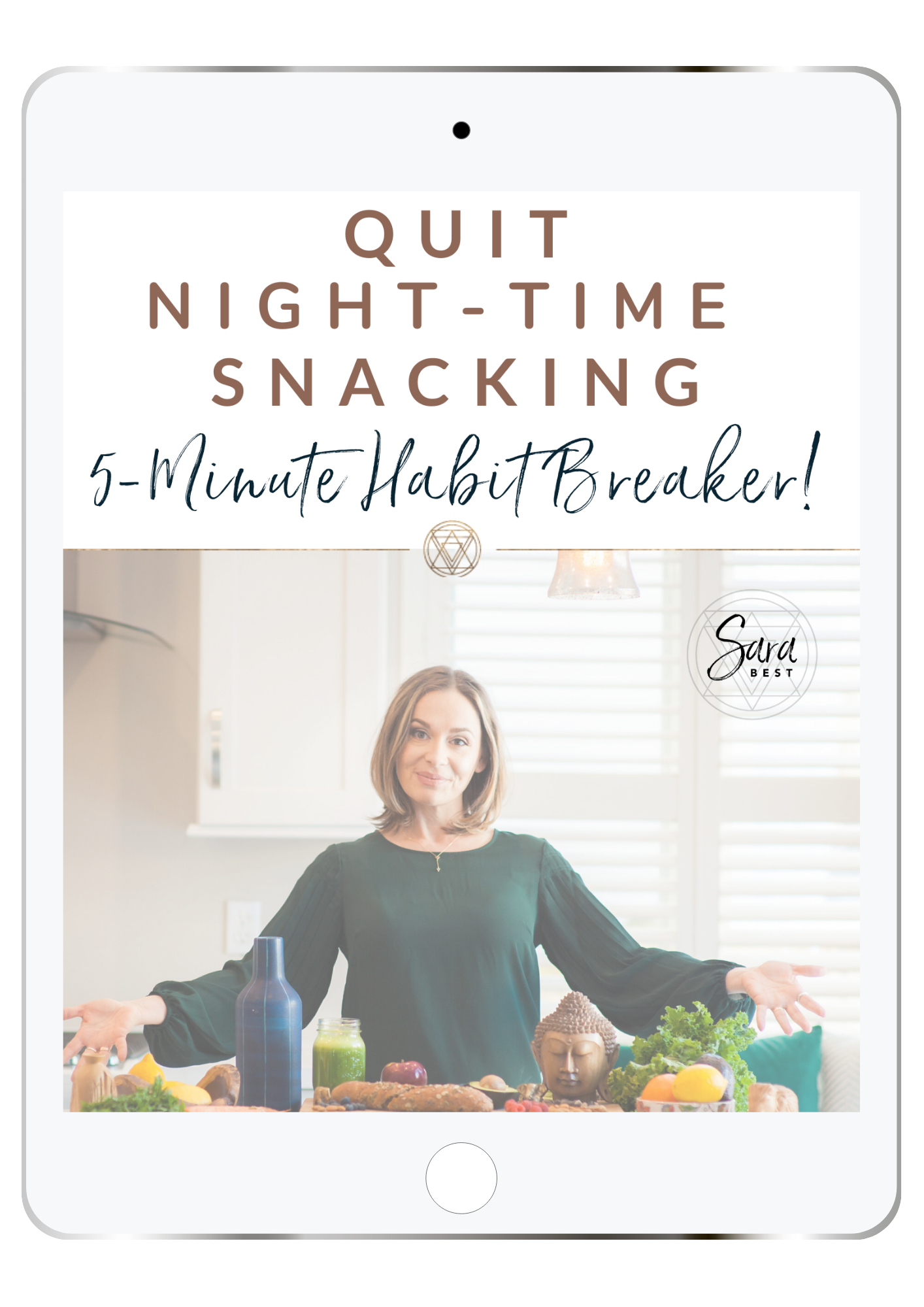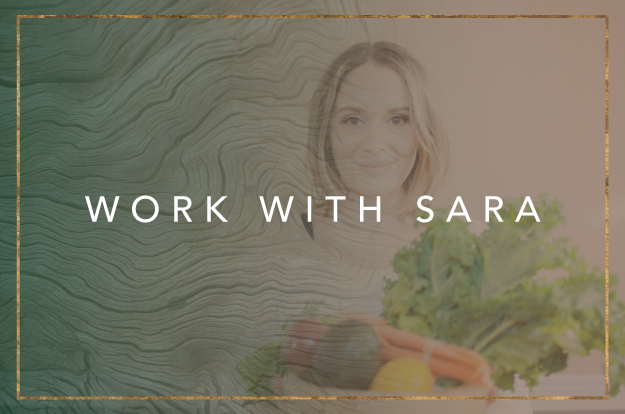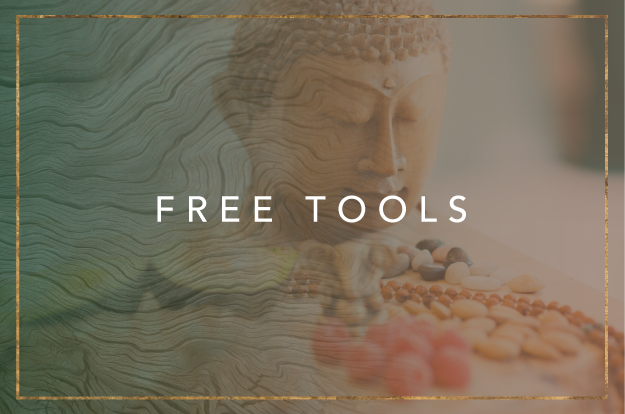
There’s something I see again and again when I work with clients and my students in my Change Your Brain – Change Your Body program. It’s something that so many of us are doing and it’s something that always results in us feeling like we’re taking one step forward and three steps back.
What I’m talking about is our tendency to try to make changes in our behaviors around food in a way that’s actually contrary to how our brains are naturally wired. We’re working AGAINST our brain’s natural wiring rather than WITH it.
And that is a fight that we always end up losing.
To illustrate, let’s look at a common scenario…
It’s evening time and you’ve had a crazy long day and been super busy. You’re feeling exhausted, run down, overwhelmed and before you know it, you’re standing in front of the cupboard looking for salty snacks, sweet snacks and maybe a glass of wine to help you numb out in front of the TV or your ipad, right?
And there’s a little voice in your head that’s saying “Don’t do this.”
That voice reminds you that you were going to make better choices. You weren’t going to do this anymore. You should probably be journaling and going to bed early or doing some yoga instead of stuffing yourself with junk food once again.
That part of your brain is whispering, “We had a plan! We weren’t going to eat chips anymore after eight o’clock!” Or, “We weren’t going to eat the ice cream anymore!” And yet here you are on the couch again doing the exact same thing.
And why is this?
It’s NOT because you don’t have enough willpower.
It’s NOT because you’re weak.
It’s NOT because you lack the moral character to stick with a program.
It’s because you’re working against the way your brain is naturally wired. You’re fighting biology.
You’re trying to simply resist a craving. You’re trying to simply tell you brain, “no” when it wants something. And that is a David and Goliath battle that you are almost always going to lose…eventually..
See, your brain is very good at making you do what it wants you to do. Our brains have been doing this for hundreds of thousands of years. It’s simple biology. And when you try to swim against that current with sheer willpower it’s (almost) never going to work.
And that’s why we find ourselves night after night on the couch eating the foods that we don’t really want to be eating even though we made a plan and promised ourselves we would do better.
So, if we know that trying to resist our cravings is pitting us against our own brains then what should we be doing instead?
How can we start working with the way our brains are naturally wired so that we can start to make the healthy changes stick?
WHAT YOUR BRAIN AND GOOGLE HAVE IN COMMON
You know how big companies and brands have a mission statement? The purpose of a corporate mission statement is to clearly convey the values and direction of the organization and make sure everyone is on the same page.
For example, Google’s mission statement is, “To organize the world’s information and make it universally accessible and useful.”
At Nike, the mission statement is, “To bring inspiration and innovation to every athlete in the world.”
At both Google and Nike there are all kinds of projects going on and thousands of employees. But they’ve distilled their values and their focus into one simple mission statement so that, if anyone in the organization is confused about what they should be doing or a direction they should be taking, they can look to the mission statement to help them decide. A simple question “does path A or path B bring us closer to our mission?” can be asked. And with the answer they will know exactly what to do.
Your brain has a mission statement too.
And despite the fact that we’ve made all kinds of modern technological advances and explored the far reaches of the universe around us, your brain’s mission statement really has not changed from what it was thousands of years ago when we were living in caves and that is, “Avoid pain, seek pleasure and use as little energy as possible while doing that”.
This is the single intention that drives almost all of your choices and behaviors every single day.
And just like Google and Nike are working on a whole bunch of different projects but still driven by one singular mission statement. Your brain is running your heart and your nervous system and your taste buds and it’s creating eyelashes and telling your whether or not to try something new. And through all of that, it has one simple mission statement: Avoid pain, seek pleasure and use as little energy as possible in the process.
Interestingly enough, this is the same mission statement that almost every living thing’s brain has. When the monkey gets hungry, it goes for the lowest hanging fruit on the tree. Avoid pain of hunger. Seek pleasure of fruit. Don’t climb to the top of the tree, choose the lowest hanging fruit.
Plants do this too! When a plant needs sun but finds itself in the shade it will lean into the sun. They don’t zigzag around. They go straight to the sun using as little energy as possible.
Or for those of us who have had the fun of have having raccoons move into our attic (I can’t be the only one right?), the same mission statement is driving them to do that. A raccoon is cold (pain) and sees your warm (pleasure) attic. The mission statement in its brain tells it to expend as little energy possible which means that raccoon is not building a house in the forest to keep it warm. Nope, she’s breaking into your warm, cozy and EASY attic.
Avoid pain, seek pleasure and do it while expending as little energy as possible.
All living brain’s have the same mission statement (including yours).
And your brain is always going to want to stick to the mission statement – that’s just how it’s wired.
But what I see, time and time again, is people trying to work against this mission statement.
They’re trying to make their brain avoid pleasure (yummy snack), seek pain (do yoga instead) all while using way too much energy (white-knuckling willpower).
And THIS is why you just end up back on the couch eating potato chips in front of the TV (even though you didn’t want to).
You know you want to make better choices but you honestly don’t feel like you can. All because you’re trying to work against your brain’s natural programming. And it’s practically impossible.
Whenever your brain senses pain, whether it’s physical or emotional, it looks for the closest pleasure that’s going to require the least amount of energy to get. And for many of us that looks like feeling tired, stressed, overwhelmed, lonely, bored and turning to food to feel better.
So, as we set out to make healthy choices more consistently, you must consider your brain’s mission statement. You aren’t ever going to change that so let’s start working with it.

HOW TO WORK WITH YOUR BRAIN
STEP ONE: Replace Judgement With Curiosity
Think about the first part of the mission statement: Avoid pain.
When you crave something, or when you make a not-so-great choices, you don’t want to be heaping on the judgment. That’s just more pain. All that’s going to do is make your brain crave the pleasure of the food even MORE.
Instead of heaping on judgment and guilt, replace that judgement with curiosity and ask yourself questions like:
-
What’s really going on here?
-
What am I feeling?”
-
Am I worried?
-
Am I anxious?
-
Am I afraid?
-
Am I lonely?
And when I’m telling my students to get curious, I always get them to ask this eye-opening question:
“How am I hoping this food will make me feel?”
STEP TWO: Make the Healthy Choice Into a Treat
Next, think about the second part of your brain’s mission statement: Seek out pleasure.
How can you make the healthy choices you want to make into an irresistible pleasure for your brain?
Why do you want to make healthy choices? What is the bigger vision that you have for your health and your life? You need to have an appealing, pleasurable, desirable reason why you’re doing this. It can’t just be to lose 20 pounds or to have more energy. Those don’t feel like pleasure to your brain. What is it that you really want? WHY do you want to lose the weight and have more energy?
Knowing this is such an important step that it’s actually an entire module in my Change Your Brain – Change Your Body program!
You can start to craft this bigger vision for yourself by asking yourself:
-
How would my life be different if I reached my goal?
-
What would I be able to do with the people that I love?
-
What are some experiences I would be able to have?
-
How would I feel about myself?
What you’re trying to do is create a really specific and detailed vision, almost like a movie in your head of the amazing, healthy life that you’re creating.
Start to think in real detail about what it is you’re trying to create so you can capitalize on your brain’s biological desire to move towards pleasure.
Then reframe those daily healthy choices you want to make into important steps you’re taking towards that delicious vision of the life you’re going to create.
STEP Three: Make it Feel Easy
Finally, think about the final part of the mission statement: Use as little energy as possible to get from pain to pleasure..
This is SO important because your brain will always be more drawn to pleasures that feel easy to achieve over things that appear to be hard. For this reason, we want to think about breaking our bigger goals down into winnable, small baby steps.
Something I often see people do when they’re working at cross purposes with their brain’s wiring is setting gigantic goals.
“I’m going to give up all sugar!” Or, “I’m going to work out six days a week forever!”
This does not feel pleasurable to your brain. It’s too big. It feels like it requires a lot of energy. Your brain is automatically going to say “Nope, don’t think so”. And it will come up with all kinds of reasons to sabotage you in that endeavor.
So instead of a goal like “I’m going to give up sugar” try “instead of having a bowl of ice cream every night, I’m going to have one square of dark chocolate”. You’re not entirely giving up sugar but you’re making a baby step towards your bigger goal.
You’re starting with a very small, very winnable, very good feeling goal. A goal that makes your brain happy.
With such a specific goal you’ll know that you’ve done it right at the end of the day. When you say “I didn’t have the ice cream tonight, I had this square of dark chocolate” you feel great, it’s pleasurable. And it’s immediate. Immediate gratification is what your brain wants.
I’m not saying don’t have big goals. Absolutely have big goals. Have a big vision for yourself, but then break it down into baby steps.
Make sure to think about how you can take your big goals and break them into little mini goals. Do not underestimate the power of baby steps. Not only are they powerful but they allow you to work with your brain and that will ultimately be what changes your life. Your brain likes baby steps. You may think that you like doing grandiose gestures, like “I’m giving up sugar”. But very often you end up failing because it’s just too big.
RECAP
STEP ONE: Replace judgement with curiosity –
resist the urge to judge yourself on pile on the guilt as this simply triggers more reward-seeking behavior
STEP TWO: Make the healthy choices into a treat –
capitalize on your brain’s desire for pleasure and reframe the healthy choices into key steps that are bringing you closer to a bigger, more delicious and exciting vision for the future you that you’re creating.
STEP THREE: Make it feel easy
break your big health goals down into tiny, baby steps so that they feel easy for your brain.
Okay, now you’ve got three steps that will help you start approaching the healthy changes you want to make in a way that aligns with your brain’s mission statement and the way your brain is naturally wired rather than against it. Give this approach a try and let me know how it goes!!





I’m going to give it a try I’ve been all over the board this past few weeks
This is great info! I’m going to try this!